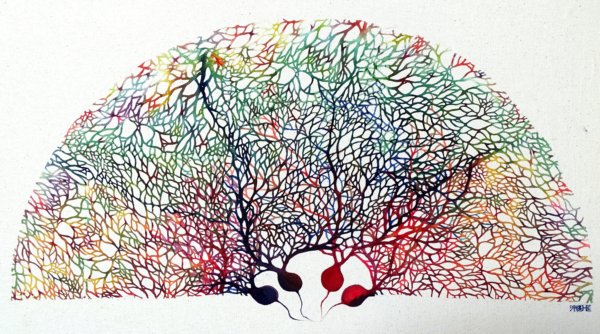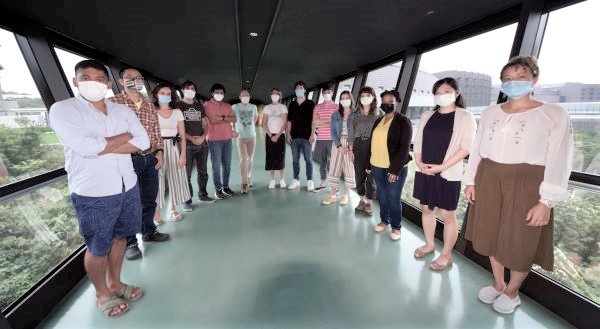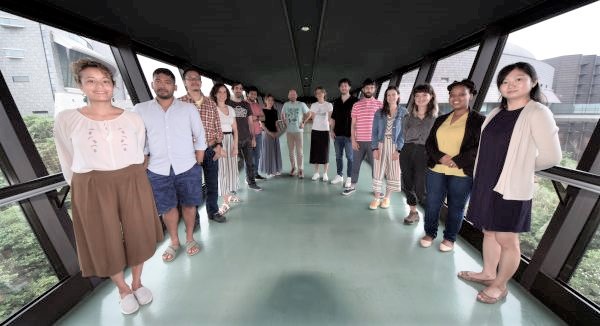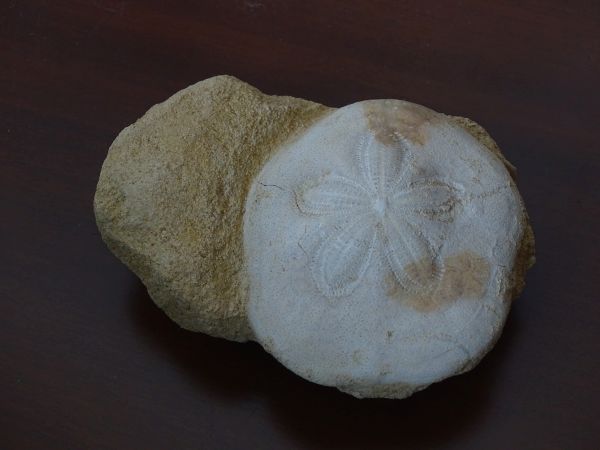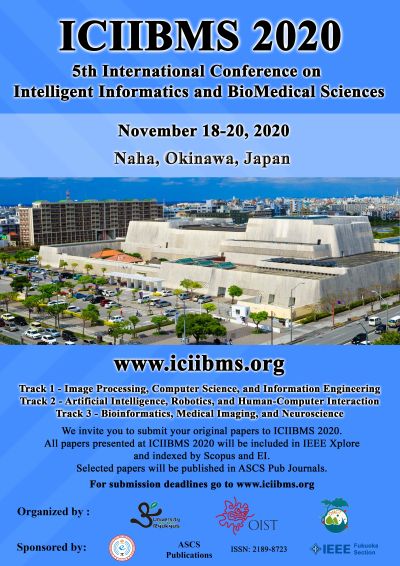FY2019 Annual Report
Optical Neuroimaging Unit
Associate Professor Bernd Kuhn
Abstract
In the FY 2019 the Optical Neuroimaging Unit continued the projects of the previous years. Research projects focused on imaging neuronal activity in the brain of awake mice.
1. Staff
- Dr. Bernd Kuhn, Associate Professor
- Dr. Christopher J. Roome, Staff Scientist
- Dr. Sigita Augustinaite, Staff Scientist
- Dr. Shinobu Nomura, Postdoc
- Ray X. Lee, Ph.D. student
- Neil Dalphin, Ph.D. student
- Leonidas Georgiou, Ph.D. student
- Soumen Jana, Ph.D. student
- Lina Koronfel, Ph.D. student
- Mohamed Mostafa Eltabbal, PhD student
- Miles Desforges, PhD student
- Dr. Kazuo Mori, Technical Assistant
- Hiroko Chinone, Research Unit Administrator
- Yohanna Sanicola, Research Unit Administrator
2. Collaborations
2.1 Post-traumatic behavioral development in adult mice
- Description: Behavioral study with fine scale analysis of post-traumatic behavioral development in adult mice
- Type of collaboration: Joint research
- Researchers:
- Associate Professor Greg Stevens, OIST and Vrije Universiteit Amsterdam
2.2 Imaging cortical activity during spontaneous behavior
- Description: Calcium imaging of cortical neurons in different regions and layers during spontaneous behavior
- Type of collaboration: Joint research
- Researchers:
- Associate Professor Greg Stevens, OIST and Vrije Universiteit Amsterdam
2.3 High-resolution imaging of the barrel cortex through VSD and LFP recordings
- Description: Combining high-resolution electical recording with electrode arrays and voltage imaging
- Type of collaboration: Joint research
- Researchers:
- Associate Professor Stefano Vassanelli, Padua University, Italy
2.4 Imaging average membrane potential with ANNINE-6 in layer 1 of barrel cortex of the mouse
- Description: Imaging voltage from cortical layer 1 in mice; synthesis of new voltage-sensitive dyes
- Type of collaboration: Joint research
- Researchers:
- Dr. Eugene Khaskin, Science and Technology Group, OIST
3. Activities and Findings
3.1 Dendritic coincidence detection in Purkinje neurons of awake mice
Dendritic coincidence detection is thought fundamental to neuronal processing, yet the basic dendritic voltage-calcium relationship remains unexplored in awake animals. Here, using simultaneous voltage and calcium two-photon imaging of Purkinje neuron spiny dendrites, we show how coincident sub- and suprathreshold synaptic inputs modulate dendritic calcium signaling during sensory stimulation in awake mice. Sensory stimulation evokes subthreshold excitatory and inhibitory post-synaptic potentials, that coincide with suprathreshold dendritic spikes triggered by climbing fiber and parallel fiber synaptic input. Purkinje neuron dendrites integrate these inputs in a time-dependent and non-linear fashion to enhance the sensory evoked dendritic calcium signal. Intrinsic supra-linear dendritic mechanisms, including voltage gated calcium channels and metabotropic glutamate receptors, are recruited cooperatively to expand the dynamic range of sensory evoked dendritic calcium signals. This establishes how dendrites use multiple interplaying mechanisms to perform coincidence detection, as a fundamental and ongoing feature of dendritic integration during behavior.
3.2 Imaging average membrane potential with ANNINE-6 in layer 1 of barrel cortex of the mouse
Membrane voltage oscillations in layer 1 of primary sensory cortices might be important indicators of cortical gain control, attentional focusing, and signal integration. However, electric field recordings are hampered by the low seal resistance of electrodes close to the brain surface. To study layer 1 membrane voltage oscillations, we synthesized a new voltage-sensitive dye, di1-ANNINE-6plus, that can diffuse into tissue. We applied it with a new surgery, leaving the dura intact but allowing injection of large quantities of staining solution, and imaged cortical membrane potential oscillations with two-photon microscopy depth-resolved (25 to 100 µm below dura) in anesthetized and awake mice. We found delta (0.5-4 Hz), theta (4-10 Hz), low beta (10-20 Hz), and low gamma (30-40 Hz) oscillations. All oscillations were stronger in awake animals. While the power of delta, theta, and low beta oscillations increased with depth, the power of low gamma was more constant throughout layer 1. These findings identify layer 1 as an important coordination hub for the dynamic binding process of neurons mediated by oscillations.
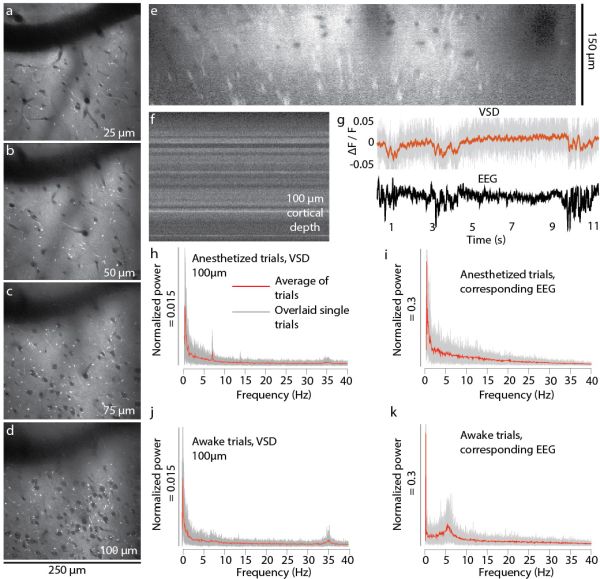
The new voltage-sensitive dye di1-ANNINE-6plus allows to label layer 1 in vivo without removing the dura (a-e). Two-photon line scans (f) reveal sleep spindles in layer 1 (g) and oscillations (h,j).
3.3 Two-photon imaging of layer 6 corticothalamic feedback in a behaving mouse
Layer 6 (L6), the deepest lamina of cerebral cortex, is one of the key structures regulating behavior state related information processing within cortex and various subcortical areas. However, very little is known about the functional significance of different L6 circuits in vivo. In this project, we focus on primary visual cortex L6 feedback projections to visual thalamus (dorsal lateral geniculate nucleus, dLGN) which regulate visual signal transmission from retina to cortex. We perform calcium imaging of retrogradely marked L6 corticothalamic (CT) neurons with 2P microscopy in a head-fixed Ntsr1-cre mouse. We record neuronal activity from the same neurons for several hours and / or repeat during different days while presenting visual stimuli and monitoring the activity of a mouse. In this way, we can study the corticothalamic feedback during different behavior states, ranging from full alertness to sleep.
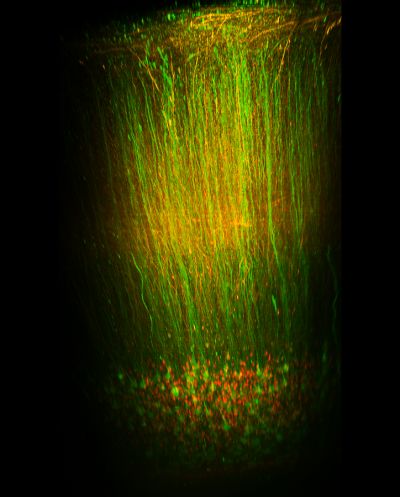
3.4 GRACE: hiGh-Resolution imAging of the barrel CortEx through VSD and LFP recordings
The aim of this research project is to develop an innovative and advanced dual approach to study the barrel cortex in mice, combining Voltage Sensitive Dye (VSD) imaging and high-resolution electrical recordings. The research will be carried out between Japan and Italy: at OIST (Okinawa, Japan) during the initial outgoing phase and at the Department of Biomedical Sciences of the University of Padova during the returning phase.
Sensory-evoked activity in the neocortex is known to manifest in the form of propagating waves but up to now there are no studies directed towards a high-resolution mapping of these waves in the barrel cortex in vivo. VSD imaging will be performed simultaneously with high-resolution electrical mapping of Local Field Potentials (LFPs) through CMOS-based implantable neural probes developed within an EU project coordinated by UNIPD (CyberRat; FP7, #216528). Once fully established in OIST, this dual method will be transferred to UNIPD and will allow the study of neuronal signal propagation through a 3D architecture in living tissue with simultaneous high-resolution optical and electrical recordings.
3.5 Imaging neuron glia interaction in awake mice
One of the most exciting modern hypothesis in neuroscience is that astrocytes respond to neuronal signals with fast (<500ms) calcium transients that in turn can influence neuronal activity. However, it is controversial whether astrocytes respond reliably to neuronal signals in vivo. We developed a method that allows us to simultaneously record the activity of cortical astrocytes and thalamocortical axons at high contrast in the awake mouse. The method exploits the poorly characterized anterograde trans-cellular transfer properties of adeno-associated viruses (AAVs). We found that AAVs can transfer via axons to both neurons and astrocytes. This property allows us to express genetically encoded calcium indicators in axons and sparse contacting astrocytes and image their interactions with two-photon microscopy through a cranial window. We are investigating how different behavioral states (i.e. whisker stimulation, running, resting, sleeping, stress) influence the communication between axons and astrocyte microdomains in the somatosensory cortex of mice. Our findings challenge the spatial specificity of AAVs and allow us to record astrocyte-neuron interactions at high contrast under physiological conditions.
3.6 Imaging PKA activity in vivo
In the CNS, protein kinase A (PKA) is controlled by neuromodulators through G-protein-coupled receptors, therefore it is thought to be involved in multiple brain functions. However, PKA activity has not been observed with cellular or subcellular resolution in vivo.
In this study we imaged PKA activity of cortical neurons in awake mice. A genetically encoded single GFP-based PKA sensor, GakdYmut, was expressed after adeno-associated viral gene transfer. Mice were head fixed on a cylindrical treadmill and were allowed to walk ad libitum during imaging using two-photon microscopy through a chronic cranial window.
In somatosensory cortex, PKA activity rose in dendrites and somata of neurons in layer II/III and V with the onset of locomotion, and then reached a maximal amplitude after walking offset. PKA activity in dendrites and somata peaked 20 ± 9 seconds (n = 685) and 20± 6 seconds (n = 372), respectively, after the offset of locomotion, with maximal amplitudes of ΔF/F = 14%. PKA activity from labeled dendrites (43%) and somata (22%) showed synchronous responses greater than 2.5% ΔF/F (20s time window), in the same field of view. Similar PKA activity patterns were detected in the posterior parietal cortex, but not in the anterior cingulate cortex. Simultaneous imaging of PKA and calcium with the red calcium indicator protein rGECO revealed that PKA activation is independent of calcium influx due to spiking or bursting. We will try to identify neuromodulators which affect locomotion-related PKA activity in cortical neurons using pharmacology and electrophysiology.
3.7 Social relationship explains stress incubation along brain hemisphere-specific
correlates in adult mice
While stress reactions can emerge long after the triggering event, it remains elusive how they emerge after a protracted, seemingly stress-free period, during which stress incubates. Here, we study the behavioral development in mice isolated after observing an aggressive encounter inflicted upon their pair-housed partners and compared the results with those in multiple control paradigms. Mice isolated following the acute witnessing social stress gradually developed a wide range of long-term differences, compared to control, of their spontaneous behaviors, social interactions, and physiological conditions, including hemisphere-specific structural differences in the cerebral cortex. We developed a spatially resolved fine-scale behavioral analysis and applied it to standard behavioral tests. It reveals that the seemingly sudden emergent behavioral differences developed gradually. Interestingly, these behavioral differences were not observed if the aggressive encounter happened to a stranger mouse, suggesting that social relationship underlies the stress development in this paradigm, which may have important disease-relevant links.
4. Publications
4.1 Journals
4.2 Books and other one-time publications
4.3 Oral and Poster Presentations
-
S. Augustinaite and B. Kuhn (2020) Complementary activity of sensory activated and suppressed layer 6 corticothalamic neurons reflects behavioral state. Gordon Research Conference Thalamocortical Interactions – Ventura, USAS.
-
Augustinaite and B. Kuhn (2020) Complementary activity of sensory activated and suppressed layer 6 corticothalamic neurons reflects behavioral state. Second Osaka University - OIST Symposium, OIST
-
C.J. Roome and B. Kuhn (2019) Exploring dendritic integration in Purkinje neurons of awake mice. Cerebellum Gordon Research Conference, Les Diablerets, Switzerland
-
L. Georgiou and B. Kuhn (2019) AAV mediated trans-synaptic tagging of astrocytes: A novel tool for studying neuron-astrocyte interactions. Glia2019, Porto, Portugal
5. Intellectual Property Rights and Other Specific Achievements
Nothing to report
6. Meetings and Events
6.1 Workshop: Okinawa Computational Neuroscience Course 2019
- Date: June 24- July 11, 2019
- Venue: OIST Seaside House
- Organizers: Drs. E. De Schutter, K. Doya, J. Wickens, B. Kuhn
- Speaker (among others): Bernd Kuhn
- Title 1: Voltage-gated channels and the Hodgkin-Huxley model of neuronal activity
- Title 2: Functional Optical Imaging Methods
6.2 Onna-son/OIST Children’s School of Science 2019
- Date: August 19-23, 2019
- Venue: Fureai Taiken Center
- Speaker (among others): Bernd Kuhn
- Topic: Palaeontology of Okinawa for Grade 1-3
6.3 ICIIBMS 2019
- The Second International Conference on Intelligent Informatics and BioMedical Sciences (ICIIBMS) is in the planning phase.
- Date: November 21-24, 2019
- Venue: Shanghai, China
- Organized by researchers of the University of the Ryukyus, the Okinawa National College of Technology, and OIST
- 150 participants
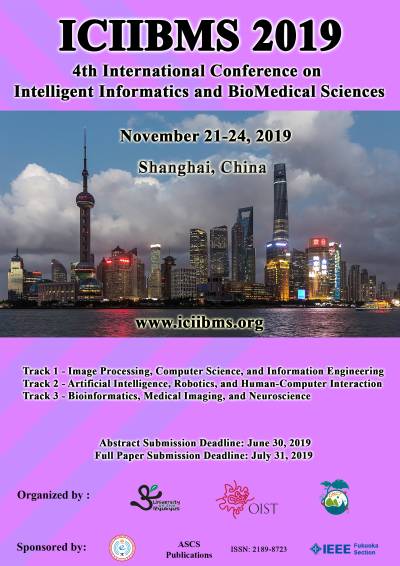
7. Other
7.1 Interview
- Kuhn, B. (2019) 世界の頭脳が集う亜熱帯の研究機関 - OIST の魅力を気鋭の研究者に聞く沖縄科学技術大学院大学(OIST), Optronics p. 98-103 (Japanese).
7.2 Planning of ICIIBMS 2020
- The Fourth International Conference on Intelligent Informatics and BioMedical Sciences (ICIIBMS) is in the planning phase.
- Date: November 18-20, 2020
- Venue: Naha, Okinawa
- Organized by researchers of the University of the Ryukyus, the Okinawa National College of Technology, and OIST




